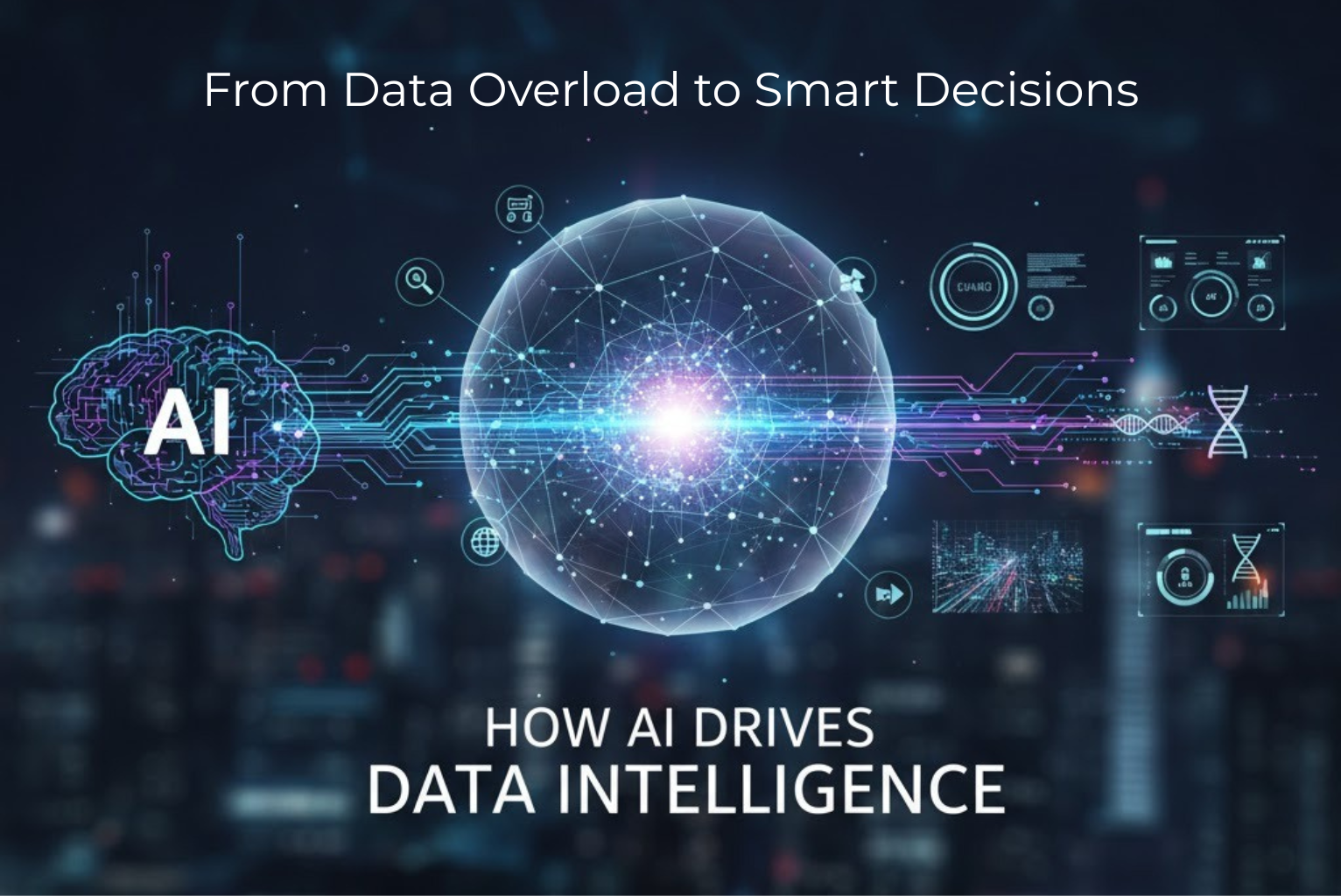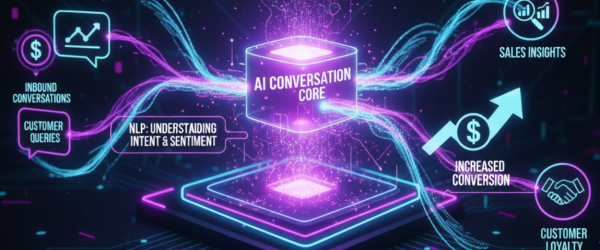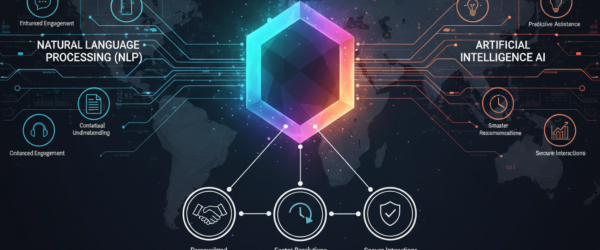Introduction
The modern enterprise runs on data. But in an era where data volumes double almost every three years, the sheer magnitude of information has turned this greatest asset into one of our biggest liabilities. We’ve moved past simple data scarcity and landed squarely in an age of data overload.
This is the chasm that Artificial Intelligence (AI) and Machine Learning (ML) are bridging. They aren’t just tools; they are the necessary intelligence layer that transforms chaotic data streams into organized, actionable knowledge—a concept known as Data Intelligence (DI). This shift is fundamental, redefining how organizations move from collecting data to deriving value from it, leading directly to smarter, faster, and more profitable business decisions.
The Exponential Challenge of Data Overload
The scale of data growth is staggering. According to Statista, the amount of data created globally is projected to exceed 180 zettabytes by 2025 (Statista, 2024). Worse yet, a vast quantity of this is “dark data”—information collected but never used—which can account for up to 90% of all organizational data (Forbes, 2023). This represents immense risk and wasted opportunity. Without an automated, intelligent framework, businesses are left trying to find a needle in an ever-growing digital haystack.
The Core Mechanism: How AI Creates Intelligence
Data Intelligence is achieved by teaching the infrastructure how to understand, classify, and connect data automatically. AI fundamentally solves the issue of data preparation, which historically consumed up to 80% of a data scientist’s time, by automatically detecting data quality issues and standardizing formats across disparate sources.
The core mechanism lies in Advanced Feature Engineering and Contextual Pattern Recognition. ML algorithms uncover hidden correlations and generate highly predictive synthetic features that human analysts might overlook. Techniques like Natural Language Processing (NLP) convert unstructured text (like reviews and emails) into quantifiable sentiment, while specialized ML algorithms use anomaly detection to spot complex behavioral patterns, predict future outcomes, and flag deviations in real-time.
Driving Actionable Business Outcomes
The integration of AI-driven DI permeates every business function, creating significant competitive gains. A McKinsey study found that early adopters of AI are already experiencing greater revenue growth than their competitors (McKinsey, 2023).
Hyper-Personalization and Revenue
AI moves beyond simple customer segmentation to hyper-personalization by analyzing behavioral data and real-time interactions. Companies that deploy advanced personalization techniques can see an average increase in revenue of 15% to 25% through optimized recommendations and dynamic content delivery (McKinsey, 2021).
Operational Efficiency and Risk Mitigation
In operations, DI is revolutionizing efficiency, especially in industrial and financial settings. Instead of relying on manual audits or reactive failure repair, AI monitors vast data streams to optimize performance and predict risks.
For operations and finance, this shift delivers tangible cost savings and security improvements:
| Challenge Solved by AI | AI-Driven Action | Business Outcome |
| Unexpected Failures | Predictive Maintenance | 9% to 12% reduction in maintenance costs (McKinsey, 2023) |
| Financial Fraud | Anomaly Detection | Reduced fraudulent transactions by up to 50% (Deloitte, 2024) |
Conclusion
The transition from data overload to smart decisions is the definitive challenge of the 21st-century business. By integrating AI and ML, organizations are not merely automating tasks; they are building a genuinely intelligent infrastructure that learns, predicts, and acts autonomously. This enables businesses to shift from being reactive to proactive, unlocking competitive advantage and establishing a culture of truly data-driven decision-making. The future isn’t just about having more data—it’s about having better, smarter insights.







